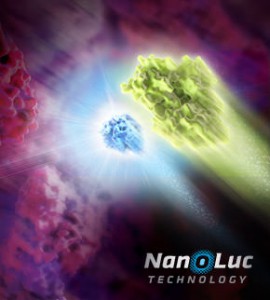
The luciferase immunoprecipitation system (LIPS) assay is a liquid phase immunoassay allowing high-throughput serological screening of antigen-specific antibodies. The immunoassay involves quantitating serum antibodies by measuring luminescence emitted by the reporter enzyme Renilla luciferase (Rluc) fused to an antigen of interest. The Rluc-antigen fusion protein is recognized by antigen-specific antibodies, and antigen-antibody complexes are captured by protein A/G beads that recognize the Fc region of the IgG antibody (1).
In a recent publication (2), this assay was used to assess the presence of autoantibodies against ATP4A and ATP4B subunits of parietal cells H+, K+-ATPase in patients with atrophic body gastritis and in controls. H+,K+-ATPase, which is present in the parietal cells of the gastric oxyntic mucosa, is a gastric proton pump that functions to maintain an acidic environment within the stomach by transporting H+ and K+ ions. H+, K+-ATPases are P-type ATPases existing as heterodimers: the alpha-subunit, coded by the ATP4A gene. Circulating autoantibodies targeting this H+,K+-ATPase proton pump of the gastric parietal cell are considered diagnostic markers in patients with autoimmune gastritis and pernicious anemiagnosis of autoimmune gastritis relies on the demonstration of these autoantibodies.
A brief overview of the experimental design is as follows; Rluc-ATP4A was expressed in vitro using the TnT SP6 Quick Coupled Transcription/Translation kit,based on transcription by the SP6 phage RNA polymerase and translation by a rabbit reticulocyte lysate cell-free expression system. Nluc-ATP4B was expressed in eukaryotic cells. Human serum from each test sample was seeded into the wells of a 96 filter plate. Recombinant luciferase antigens were then added to each well and the plate incubated for 2 hours at room temperature. To recover immune complexes, Protein A was added to each well, and incubated for 1 h at 4 °C with shaking. Plates were then washed. After the last wash, the plates were air-dried, 40μl of either Renilla luciferase or Nano-Glo® assay substrates was added to each well, and luminescence measured.
Results indicated that ATP4A and ATP4B autoantibodies closely associated with atrophic body gastritis. Both assays had the highest sensitivity, at the cost of diagnostic accuracy (89 and 90% specificity), outperforming traditional EIA.
- Burbelo, P.D. et al. (2015) Luciferase immunoprecipitation systems for measuring antibodies in autoimmune and infectious diseases. Translational Res. 165, (2). 325–35
- Lahner, E. et al. (2017) Luminescent Immunoprecipitation System (LIPS) for Detection of Autoantibodies Against ATP4A and ATP4B Subunits of Gastric Proton Pump H+,K+-ATPase in Atrophic Body Gastritis Patients. Patients Clin. Transl. Gastroenterol. 8(1) e215
